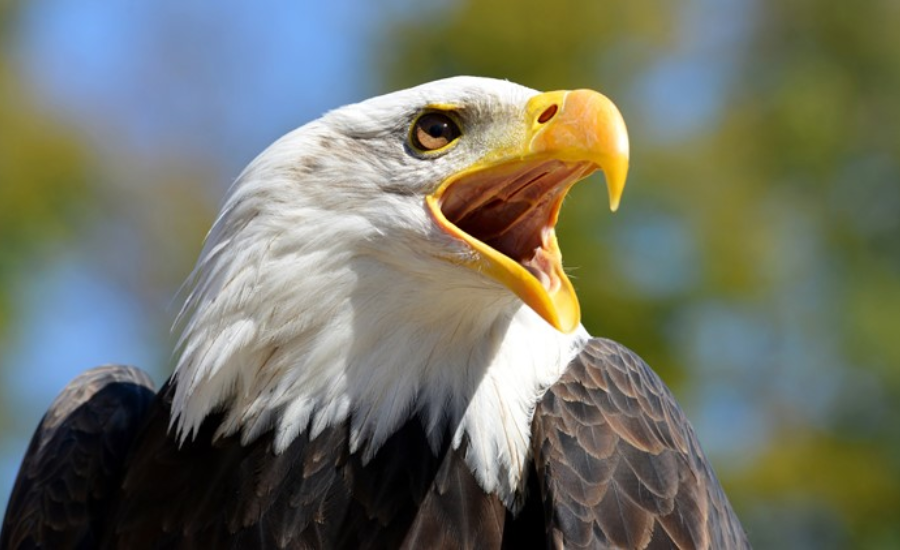What is a Hancock Bird? Hancock Bird Meaning
The term “Hancock birds” refers to a vast, interconnected ecosystem that highlights the remarkable synergy between human ingenuity and the splendor of avian species, with a particular focus on the bald eagle. This concept is brought to life through the efforts of the Hancock Wildlife Foundation (HWF), an organization dedicated to the preservation and protection of these majestic creatures.
By exploring the fascinating realm of Hancock birds, we gain insight into HWF’s multifaceted strategies for wildlife conservation. Their comprehensive approach not only aims to safeguard bird populations but also seeks to engage and educate the public. Through innovative programs and initiatives, HWF fosters a deeper appreciation and enthusiasm for wildlife, encouraging active participation in conservation efforts.
HWF’s work serves as a testament to the critical role that informed and passionate individuals play in the preservation of our natural world. By combining scientific research, community outreach, and educational endeavors, they effectively promote the importance of wildlife conservation, ensuring that the beauty and diversity of Hancock bird continue to thrive for future generations.
Leading the Way in Avian Conservation
Protecting the Symbol of Freedom: Bald Eagle Conservation
The bald eagle, an enduring emblem of strength and freedom, stands at the forefront of the Hancock Wildlife Foundation’s (HWF) conservation initiatives. Under the guidance of renowned wildlife conservationist David Hancock, HWF has developed pioneering techniques that emphasize the significance of habitat preservation and scientific inquiry to ensure the survival and flourishing of these majestic raptors. Through comprehensive field investigations and the use of live eagle cameras, HWF fosters a global community of wildlife enthusiasts and conservationists by providing unparalleled insight into the lives of bald eagles.
Comprehensive Wildlife Habitat Stewardship
At the heart of HWF’s mission is the protection of animal habitats, a goal that transcends the conservation of individual species. Recognizing the intricate connections between wildlife and their environments, HWF engages in programs aimed at safeguarding natural habitats. This holistic approach not only benefits bald eagles but also promotes biodiversity, which is crucial for maintaining a healthy ecosystem.
Raptor Rehabilitation and Recovery
HWF’s rehabilitation programs offer a sanctuary and a second chance at life for injured or orphaned raptors. These initiatives, which align with the foundation’s broader conservation goals, underscore its commitment to the well-being of individual animals. By releasing rehabilitated birds back into the wild and monitoring their progress, HWF enhances the resilience of raptor populations.
Connecting with Nature: Live Eagle Cams
The introduction of HWF’s live eagle cams has revolutionized the way we connect with wildlife, offering a real-time glimpse into the daily lives of eagles. This innovative tool not only bridges the gap between humans and the natural world but also serves as a powerful educational resource, fostering wonder and a deeper appreciation for nature.
Adapting to Urbanization: Urban Wildlife Coexistence
As urban areas encroach on natural habitats, understanding how wildlife, particularly raptors, adapt to these changes becomes increasingly important. HWF’s research on urban wildlife adaptation provides valuable insights into the challenges and opportunities of human-animal coexistence. This knowledge is essential for developing strategies that support both urban development and biodiversity conservation.
Engagement and Education: Building a Conservation Community
Empowering Through Avian Conservation Education
Education is a cornerstone of HWF’s mission to promote wildlife conservation. By offering a variety of tools and learning opportunities, HWF empowers individuals of all ages to become advocates for conservation. From public webinars to classroom resources, HWF’s educational initiatives are designed to spark interest, facilitate learning, and inspire action in the field of conservation.
Connecting the World: Wildlife Online Streaming and Outreach
Utilizing internet streaming technology, HWF extends its reach globally, engaging audiences in real-time conservation efforts. This approach not only raises awareness but also fosters a sense of community among viewers who share a passion for wildlife and conservation. The live streaming of wildlife activities brings the beauty of nature into homes around the world, creating a collective commitment to preservation.
Promoting Conservation Through Eco-tourism and Bird Watching
HWF advocates for bird watching and ecotourism as vital components of its conservation strategy. These activities create a symbiotic relationship between recreation and conservation, raising awareness about the beauty of nature while underscoring the importance of preserving these natural wonders for future generations. Ecotourism not only supports local economies but also reinforces the necessity of conservation efforts.
Honoring a Visionary: The Legacy of David Hancock and Future Directions
David Hancock’s Lasting Impact
The enduring efforts and successes of HWF in bird conservation are a testament to David Hancock’s legacy. His expertise and dedication have paved the way for innovative approaches to wildlife research and conservation, inspiring countless individuals to join the cause. Hancock’s contributions continue to influence and shape the foundation’s strategies and initiatives.
Innovations in Conservation Technology
Looking ahead, HWF is committed to exploring new methods and technologies to enhance its conservation efforts. Advancements such as improved live streaming capabilities and sophisticated tracking technologies promise to deepen our understanding of wildlife and enhance conservation outcomes. These innovations are set to revolutionize how we study and protect avian species.
A Call to Action: Embracing the Hancock Bird’s Legacy
The story of the Hancock bird is one of hope, connection, and discovery. It highlights the intricate relationships between humans and the natural world and the power of collective efforts to safeguard our planet’s biodiversity. The Hancock Wildlife Foundation exemplifies conservation excellence, urging us to cherish and protect the incredible birds that grace our skies.
Unveiling Eagle Nesting Behaviors
Understanding the complex behaviors associated with eagle nesting is crucial to conservation efforts and forms a significant part of HWF’s research. By observing these behaviors, HWF gains insights into the needs of bald eagles during their breeding cycle, informing management and conservation strategies to protect their habitats.
Gaining Insights Through Live Eagle Cams
HWF’s live eagle cams offer a unique opportunity to observe eagles in real time during their nesting periods. These observations have revealed fascinating aspects of eagle parenting and chick development, providing invaluable data for scientific research and public education. The live footage serves as a powerful tool for raising awareness and fostering a deeper appreciation for these majestic birds.
Navigating the Impact of Environmental Changes
Eagle Nesting Behaviors and Environmental Shifts
Environmental changes, including climate shifts and habitat degradation, significantly affect eagle nesting behaviors. The Hancock Wildlife Foundation (HWF) conducts ongoing research to better understand these impacts and to develop conservation strategies aimed at mitigating negative effects. By studying how environmental changes influence nesting, HWF can implement measures to support healthy eagle populations.
Strategic Habitat Conservation
Using data on eagle nesting behaviors, HWF advocates for and implements effective habitat protection strategies. Key aspects of these efforts include safeguarding nesting sites from human disturbance and ensuring the availability of adequate food sources. By preserving these crucial habitats, HWF helps maintain the necessary conditions for eagle breeding and survival.
The Mysteries of Eagle Migration
Eagle migration has long intrigued scientists and birdwatchers alike. HWF’s research into eagle migration patterns enhances our understanding of these majestic birds and informs conservation efforts to protect their migratory routes. By tracking these journeys, HWF can identify critical habitats and threats faced during migration.
Advancements in Tracking Technologies
Innovations in tracking technology, such as satellite telemetry and GPS, have revolutionized our ability to study eagle migration. These advanced methods allow HWF to gather detailed insights into the migration routes, timing, and challenges that eagles encounter. This data is invaluable for developing informed conservation strategies.
Implications for Conservation Efforts
The information obtained from tracking eagle migration is crucial for designing effective conservation plans that protect key stopover sites and migratory corridors. By ensuring safe passage for eagles during their annual migrations, these efforts contribute to the long-term sustainability of the species. HWF’s research provides the foundation for actions that preserve the integrity of migratory pathways and support the overall health of eagle populations.
HWF’s Role in Global Conservation Efforts
Expanding Global Influence in Bird Conservation
The Hancock Wildlife Foundation (HWF) extends its impact beyond local wildlife concerns, actively supporting international conservation initiatives. Through strategic alliances and collaborative efforts, HWF champions the preservation of bird species across the globe, ensuring a broader reach for its conservation mission.
Advocacy for Stronger Legislation
HWF plays a pivotal role in advocating for robust legislation to protect birds of prey. Leveraging its extensive research and public support, the foundation influences policy and legislative changes that benefit eagles and other raptors worldwide. HWF’s advocacy efforts aim to establish stricter protections and sustainable practices for avian species.
Fostering International Collaboration
HWF collaborates with global research institutions and conservation organizations to share best practices, resources, and knowledge. These international partnerships enhance the effectiveness of conservation programs and create a united front against habitat destruction and biodiversity loss. Through these collaborations, HWF amplifies its impact on a global scale.
Global Public Engagement and Education
Through its educational initiatives and live streaming services, HWF reaches a worldwide audience. This global engagement not only raises awareness about eagle conservation but also encourages collective action for avian and environmental sustainability. By educating the public and fostering a sense of global community, HWF inspires action and support for conservation efforts.
Addressing Emerging Challenges and Innovations
As the field of wildlife conservation evolves, HWF remains at the forefront by developing innovative solutions to emerging challenges. Whether tackling the impacts of climate change, addressing the pressures of urban expansion, or utilizing new technologies, HWF is dedicated to advancing eagle and wildlife conservation for future generations.
Harnessing Technological Advances in Conservation
The rapid advancement of conservation technology opens up new opportunities for research and public engagement. HWF explores cutting-edge technologies, from drone surveys of eagle habitats to AI-powered analysis of eagle cam footage, to enhance its conservation efforts. These technological innovations provide deeper insights and more effective ways to protect avian species.
Adapting to Climate Change
Climate change poses a significant threat to wildlife by affecting migration patterns, food availability, and habitats. HWF’s research is crucial in understanding these impacts and developing adaptive management strategies that ensure the resilience of eagle populations in a changing world. By studying and responding to climate change, HWF works to safeguard the future of these majestic birds.
Fascinating Facts About the Hancock Bird
Symbol of Conservation Excellence
The Hancock bird, often associated with the bald eagle, symbolizes the successful conservation efforts spearheaded by the Hancock Wildlife Foundation (HWF). These majestic birds, with their striking white heads and powerful builds, represent strength and freedom, making them an enduring icon in wildlife conservation.
Scientific Name and Classification
The bald eagle (Haliaeetus leucocephalus) belongs to the family Accipitridae and is native to North America. It is one of the largest raptors in the region, with a wingspan ranging from 6 to 7.5 feet and an average body length of 28 to 40 inches. Adult bald eagles are easily recognizable by their white heads and tails contrasted with dark brown bodies and wings.
Diet and Hunting Techniques
Bald eagles are primarily fish-eaters, often seen soaring above water bodies or perched near shorelines. They have keen eyesight, allowing them to spot prey from great distances. Using their powerful talons, bald eagles snatch fish from the water’s surface. They also feed on carrion and may hunt small mammals and birds when fish are scarce.
Habitat and Nesting Preferences
Bald eagles prefer habitats near large bodies of open water, such as lakes, rivers, and coastal regions, where food is abundant. They build large nests, known as eyries, high in tall trees or on cliffs. These nests can be reused and expanded each year, becoming massive structures that weigh hundreds of pounds.
Reproduction and Lifespan
Bald eagles are monogamous and often mate for life. They typically lay one to three eggs per breeding season, with both parents sharing incubation duties. The eggs hatch after about 35 days, and the eaglets fledge at around 10 to 12 weeks of age. Bald eagles can live up to 20 to 30 years in the wild, with some individuals in captivity living even longer.
Migration Patterns
While some bald eagles are year-round residents in their habitats, others migrate seasonally. Northern populations often move south during the winter months to find open water and more abundant food sources. HWF’s research into these migration patterns helps protect critical habitats along these routes.
Conservation Status and Efforts
The bald eagle was once endangered due to habitat destruction, illegal shooting, and the effects of the pesticide DDT. Conservation efforts, including those by HWF, have been instrumental in the species’ recovery. In 2007, the bald eagle was removed from the U.S. Endangered Species List, although it remains protected under the Bald and Golden Eagle Protection Act.
Educational and Technological Contributions
HWF uses live eagle cams to provide real-time observations of bald eagle behaviors, offering invaluable data for scientific research and public education. These cameras have revealed intricate details about nesting, parenting, and chick development, fostering a greater appreciation and understanding of these birds.
Global Impact and Advocacy
HWF’s influence extends beyond North America, as it collaborates with international conservation organizations to protect birds of prey globally. By advocating for stronger environmental policies and fostering public engagement, HWF plays a crucial role in the global conservation community.
Innovations in Conservation
HWF continuously adopts new technologies and methodologies to enhance its conservation work. From advanced tracking devices to AI-powered data analysis, these innovations help monitor eagle populations and their habitats, ensuring more effective conservation strategies.
People also ask
What is the Hancock bird?
The term “Hancock bird” often refers to the bald eagle, symbolizing the conservation efforts led by the Hancock Wildlife Foundation (HWF). HWF is dedicated to the preservation and study of these majestic raptors, particularly focusing on their nesting behaviors, migration patterns, and habitat requirements.
Why are bald eagles called Hancock birds?
Bald eagles are referred to as Hancock birds in recognition of the Hancock Wildlife Foundation’s significant contributions to their conservation. David Hancock, a renowned wildlife conservationist, established HWF, which has become instrumental in protecting and studying bald eagles.
What does the Hancock Wildlife Foundation do?
The Hancock Wildlife Foundation engages in a wide range of activities to protect bald eagles and other birds of prey. These include habitat preservation, scientific research, public education, and the use of live eagle cams to monitor eagle nests. HWF also advocates for stronger environmental legislation and collaborates with international conservation organizations.
How has HWF contributed to bald eagle conservation?
HWF has pioneered numerous conservation techniques, including habitat protection strategies, advanced tracking technologies, and public outreach programs. Their efforts have significantly contributed to the recovery of bald eagle populations, which were once endangered due to habitat loss and pollution.
What are live eagle cams and how do they work?
Live eagle cams are cameras installed near eagle nests that stream real-time footage of eagle behaviors. These cameras provide valuable insights into nesting, parenting, and chick development, serving both scientific research and public education purposes. HWF’s eagle cams have become a popular tool for engaging the public in wildlife conservation.
What challenges do bald eagles face due to climate change?
Climate change poses several threats to bald eagles, including alterations in migration patterns, changes in prey availability, and habitat degradation. HWF’s research focuses on understanding these impacts and developing adaptive management strategies to ensure the resilience of eagle populations in a changing environment.
How does HWF use technology in conservation efforts?
HWF leverages advanced technologies such as satellite telemetry, GPS tracking, and AI-powered data analysis to enhance its conservation efforts. These tools provide detailed information on eagle migration routes, habitat use, and behavior, which are critical for developing effective conservation strategies.
What is the significance of eagle migration studies?
Studying eagle migration is crucial for understanding the challenges eagles face during their journeys and for identifying critical habitats that need protection. HWF’s research on migration patterns helps guide conservation efforts to ensure safe passage for eagles and protect important stopover sites along their migratory routes.
How can the public get involved in HWF’s conservation efforts?
The public can support HWF’s conservation efforts by participating in educational programs, watching live eagle cams, and contributing to conservation initiatives. Additionally, HWF encourages advocacy for stronger environmental policies and supports volunteer opportunities for those interested in hands-on conservation work.
What are the future directions for HWF in eagle conservation?
HWF is committed to continuing its innovative approach to eagle conservation, focusing on emerging challenges such as climate change and urban expansion. Future directions include expanding the use of new technologies, enhancing international collaborations, and developing more comprehensive public engagement strategies to foster a global conservation community.
To Sum Up
The Hancock Wildlife Foundation (HWF) plays a pivotal role in the conservation of bald eagles and other birds of prey, symbolized by the term “Hancock bird.” Founded by wildlife conservationist David Hancock, HWF has become a beacon of avian conservation excellence, utilizing a blend of innovative technology, extensive research, and global collaboration to protect these majestic creatures.
Through initiatives like live eagle cams, advanced tracking technologies, and comprehensive public education programs, HWF fosters a deep connection between humans and the natural world. Their efforts extend beyond local ecosystems, advocating for stronger legislation, supporting international conservation projects, and adapting to emerging environmental challenges such as climate change.
HWF’s dedication to preserving eagle habitats, studying migration patterns, and rehabilitating injured raptors underscores their commitment to ensuring the long-term survival and flourishing of these iconic birds. By engaging the public and inspiring collective action, HWF not only raises awareness but also drives meaningful change in the conservation landscape.
The story of the Hancock bird is one of resilience, innovation, and hope. As HWF continues to lead the charge in wildlife conservation, it serves as a reminder of the profound impact that dedicated research, technological advancements, and community engagement can have on protecting our planet’s biodiversity for future generations.
Stay in touch to get more news & updates on SnapChat Planets!







